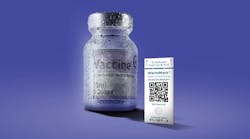Opportunities exist for companies in all industries to adapt their operations to help shape a more sustainable future – and pharmaceutical manufacturing is no stranger to this sustainability journey.
For process industries, the alignment of operational excellence and sustainability drives companies to produce greater value with fewer resources and less waste. Key themes include water, energy, waste, API discharge, material acquisition and supplier selection, efficiency of production and operations, and distribution and storage. But environmental sustainability is not the only initiative.
Many companies are also investing in social sustainability through practices that benefit the employees, consumers, and the wider community. Across various initiatives in manufacturing, companies seek to reduce their consumption of limited resources, understand the positive and negative effects of their operations on the environment and people, and develop strategies to become more sustainable in the future.
Pharma must balance these initiatives with the strict regulatory requirements that are in place to ensure the manufacturing of safe drug products. Thus, the dual mission of profitability and sustainability that so many companies seek cannot be achieved in pharma manufacturing without compliance.
Lean principles and sustainability
When it comes to reducing resources and improving productivity, strategy is often based on lean principles, with lean principles and sustainability being highly synergistic. Both lean principles and sustainability “require organizations to eliminate waste and losses relentlessly wherever they find them and to strive to incrementally improve the performance and efficiency of their operations. And lean thinking’s focus on equipping frontline teams with the skills and tools to improve their own workplaces is a perfect model for the detailed, granular work required to improve resource productivity.”
This rings true in manufacturing environments like pharma where there are pressures to deliver products quickly while adhering to regulatory standards. Implementing lean technologies can increase efficiency, eliminate quality deviations, or more rapidly identify out-of-specification (OOS) trends. Having a lean tool kit that includes technologies for rapid monitoring and trending saves energy, resources, and materials. Process efficiency and automation increase the quality of data, drive faster results, and reduce the risk offor human error. By helping to prevent product recall or loss, these tools also help avoid the potential environmental impacts of disposal.
Water use and quality
One of the top areas identified as a key challenge that pharmaceutical companies need to address is water use and quality. Not only are pharma companies subject to country- specific regulations regarding wastewater standards, but they must also meet stringent standards for ultrapure water used for production applications. Water used as an ingredient in manufacturing must be tested to ensure it meets the regulatory requirements for purity, ultimately to ensure safe drug products for patients. Compendial tests for total organic carbon (TOC), conductivity, endotoxins, and bioburden provide important data to confirm quality standards are met. Many of these parameters are also used today in real-time testing or rapid monitoring, contributing to the process analytical technology (PAT) portfolios.
Endotoxin testing
Bacterial endotoxins testing (BET) is an area where sustainability and process improvement have emerged as key topics. BET is a critical quality control test that is required to ensure safe medical products such as insulin, intravenous devices, and COVID vaccines for patients. The assay uses Limulus amebocyte lysate (LAL) reagent, which is created using factors from horseshoe crab blood, a natural resource. LAL assays are the gold standard for detecting endotoxin, and the biomedical industry has developed safe and reliable ways to extract the amoebocytes required to formulate LAL. There are also numerous sustainability initiatives led by the industry to ensure safe practices and long-term vitality of the species. However, the industry is motivated to find ways to use less LAL reagent in these tests and optimize the use of this resource. With technology advancements, it is now possible to reduce LAL use by up to 90% while remaining compliant with all global pharmaceutical regulations. This is a significant improvement compared to traditional kinetic photometric LAL techniques and the gel-clot method, as well as current alternative methods that do not meet full compendial requirements.
Modern endotoxin testing technologies can also address sustainability initiatives related to materials storage and energy by minimizing cold storage and eliminating storage needs for reference standard endotoxin (RSE) or control standard endotoxin (CSE). This reduces costs and simplifies the supply chain beyond minimizing the amount of LAL consumed per run.
Another important aspect of sustainability in endotoxin testing to consider is the sustainability of workers. Traditional endotoxin testing is very labor-intensive, requiring over 200 pipetting steps to prepare the assay. By using technology like microfluidics, labs today can minimize unnecessary repetitive actions for personnel and decrease the risk of repetitive stress injury. Improving ergonomics is a high priority, and automated technologies can be implemented to protect employee health and wellness.
Real-time release testing
For years pharmaceutical water has been released at risk due to waiting for QC results. This is due to labor- and time-intensive testing, requiring analysts to isolate samples from a water loop for evaluation in the lab. Pharma manufacturing is seeking simpler and more efficient analytical testing solutions for water testing to support the adoption of process analytical technologies for continuous manufacturing applications. Through the adoption of lean laboratory practices and PAT, manufacturers achieve greater process efficiencies, faster product release, reduced workload for analysts, and improved sustainability. These benefits can be realized while also maintaining data integrity and compliance.
It is most common for TOC and conductivity measurements to be measured in the lab with a TOC analyzer and a conductivity probe. This requires isolating samples from various points-of-use to be analyzed in the lab. Not only is the process of isolating samples, transferring them to the lab, and analyzing labor intensive and costly, but the process can also introduce contaminants that can lead to over-reporting or an OOS result. To eliminate the need to routinely sample for conductivity and TOC, many end-users are transitioning to real-time release testing (RTRT). RTRT maintains a closed loop system, ensuring process and sample integrity by eliminating human factors. Transitioning from lab, to at-line, to online leans out the labor and consumables required for water testing, in the long run saving time and money on fewer resources and materials while increasing efficiency.
Rapid microbiological methods (RMMs)
Due to the nature of traditional bioburden testing methods (i.e., culture-based methods / agar plate counts), manufacturers must wait for days to obtain results for bacterial contamination found in water loops or production sites – or choose to release waters at risk. As part of their drive to increase efficiency, optimize resource use, and minimize product loss, manufacturers have turned to rapid microbiological methods (RMMs) for process monitoring and faster detection of microbial contamination.
Bioburden testing has historically relied on agar plates to quantify the microorganisms within pharmaceutical grade water because of its reliability and accuracy. Although compendial plate counts are dependable to determine viable and culturable microorganisms, the process is time consuming and labor intensive, often requiring at least two analysts and several sampling points. Bioburden testing for ultrapure pharmaceutical water requires multiple days in incubation before an agar plate can be read to determine the results. Results are typically manually recorded, leaving opportunity for data integrity gaps. Due to the time duration it takes for accurate plate counts, most pharmaceutical water is released at risk before bioburden results come back.
To mitigate risk and reduce the time and resources required for traditional bioburden testing, the industry is seeing a rise in RMMs. These methods finally give manufacturers the ability to determine whether they have a contamination event in near real-time, lending to faster decisions impacting potential product loss and management of resources.
Cleaning validation
Water is also used in manufacturing processes such as cleaning. Analytical technologies are important to validate that an acceptable level of cleanliness has been achieved and that the next batch of product can be manufactured without product carryover from previous batches. Like other production processes, patient safety is the ultimate goal. Also similar to other processes, efficiency and optimization of resources being used (including water, detergents, labor, etc.) are priorities and feed into larger efforts around sustainability.
By implementing TOC analysis to verify equipment cleanliness, manufacturers can potentially shorten clean-in-place (CIP) cycles without sacrificing quality. For example, the analytical data provided by TOC measurements can help companies optimize CIP cycles and confirm that a shortened cleaning cycle is sufficient to remove all soils from the equipment. Shortening CIP cycles, even if only by several seconds, can result in significant cost savings over time from reduced water and/or detergent usage.
At-line analysis using technology like TOC can greatly increase process efficiency, particularly in a cleaning validation program with time constraints. Once the cleaning process is complete, required samples are taken and can be analyzed almost instantaneously using an instrument located directly next to the process to be monitored. This deployment is most successful for cleaning validation samples, particularly swabs, for monitoring time-critical operations. The laboratory workflow can be slow and clunky, creating unwanted equipment downtime. Coordinating activities with QC, sampling, analysis and release of data can leave equipment sitting idle for periods of time.
For even greater efficiency and optimized use of resources, online analysis can enable real-time release of cGMP equipment and eliminate sampling activities all together. To get multiple timepoints and a greater understanding of a process, online analysis may be the best deployment, generating multiple data points over time, reducing demands on lab personnel, and limiting resources such as lab consumables. Equipment downtime can be reduced from days to minutes with real-time release using data from a TOC analyzer integrated directly onto a CIP skid.
By leveraging process analytical technologies for water testing practices for a variety of applications – water for injection, ultrapure water, cleaning validation, etc. – both environmental and social sustainability can be enhanced. Reducing the amount of consumables used to test quality attributes, the water consumption for cleaning validation, and the time involved in labor- intensive quality assays, the life science industry can build sustainability into their standard processes while continuing to maintain patient safety at the core of their manufacturing and quality operations.






